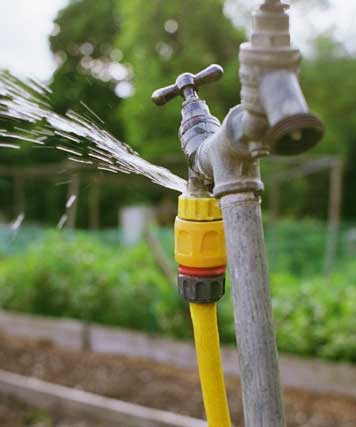Finding Hidden Water Line Leaks: 6 Useful Detection Methods
Finding Hidden Water Line Leaks: 6 Useful Detection Methods
Blog Article
The author is making a number of good points on Detecting hidden plumbing leaks overall in this article further down.

The minute you find a leakage, calling your plumber for repair services is the best option. However, some small water leakages may not be visible. Here are some hacks that help if you can not detect it with your nude eyes.
Early detection of dripping water lines can mitigate a possible catastrophe. Aside from saving you money, it will reduce the aggravation and disappointment.
Check Water Usage
Assess your water costs and track your water intake. As the one paying it, you should discover if there are any type of disparities. If you identify sudden changes, in spite of your usage being the same, it means that you have leaks in your plumbing system. Bear in mind, your water costs must drop under the exact same range on a monthly basis. An unexpected spike in your bill suggests a fast-moving leak.
Meanwhile, a consistent rise every month, despite the very same habits, shows you have a sluggish leakage that's additionally gradually escalating. Call a plumber to extensively examine your home, especially if you really feel a cozy area on your flooring with piping below.
Inspect and Examine the Situation
House owners must make it a behavior to check under the sink counters and also even inside cupboards for any bad odor or mold growth. These two red flags suggest a leakage so timely focus is needed. Doing routine inspections, also bi-annually, can save you from a major issue.
Examine the Water Meter
Examining it is a proven way that aids you uncover leaks. If it moves, that indicates a fast-moving leakage. This means you might have a slow-moving leakage that might even be below ground.
Asses Exterior Lines
Do not forget to examine your outdoor water lines as well. Examination spigots by connecting a yard hose pipe. Needs to water seep out of the connection, you have a loosened rubber gasket. Change this and make sure all links are limited. If you've got an automatic sprinkler, it will certainly help get it expertly took a look at and also kept annually. One tiny leak can squander tons of water and spike your water costs.
Do a Food Coloring Test
30% comes from toilets when it comes to water intake. Test to see if they are running appropriately. Decrease specks of food color in the tank and also wait 10 minutes. There's a leakage in between the tank and bowl if the color in some way infiltrates your dish throughout that time without flushing.
Inspect for stainings and also damaging as most pipes as well as home appliances have a life span. If you presume dripping water lines in your plumbing system, don't wait for it to intensify.
The moment you find a leakage, calling your plumber for fixings is the ideal option. Some small water leaks may not be noticeable. Examining it is a guaranteed way that helps you uncover leaks. One tiny leakage can lose lots of water and increase your water costs.
If you suspect leaking water lines in your plumbing system, do not wait for it to rise.
WARNING SIGNS OF WATER LEAKAGE BEHIND THE WALL
PERSISTENT MUSTY ODORS
As water slowly drips from a leaky pipe inside the wall, flooring and sheetrock stay damp and develop an odor similar to wet cardboard. It generates a musty smell that can help you find hidden leaks.
MOLD IN UNUSUAL AREAS
Mold usually grows in wet areas like kitchens, baths and laundry rooms. If you spot the stuff on walls or baseboards in other rooms of the house, it’s a good indicator of undetected water leaks.
STAINS THAT GROW
When mold thrives around a leaky pipe, it sometimes takes hold on the inside surface of the affected wall. A growing stain on otherwise clean sheetrock is often your sign of a hidden plumbing problem.
PEELING OR BUBBLING WALLPAPER / PAINT
This clue is easy to miss in rooms that don’t get much use. When you see wallpaper separating along seams or paint bubbling or flaking off the wall, blame sheetrock that stays wet because of an undetected leak.
BUCKLED CEILINGS AND STAINED FLOORS
If ceilings or floors in bathrooms, kitchens or laundry areas develop structural problems, don’t rule out constant damp inside the walls. Wet sheetrock can affect adjacent framing, flooring and ceilings.
https://www.servicemasterbyzaba.com/blog/how-to-detect-water-leakage-in-walls/

I ran across that review about Hacks to detect leaks while looking around the web. Sharing is good. You never know, you may very well be doing someone a favor. I am grateful for your time. Kindly come by our site back soon.
Local favorite for plumbing emergencies. Report this page